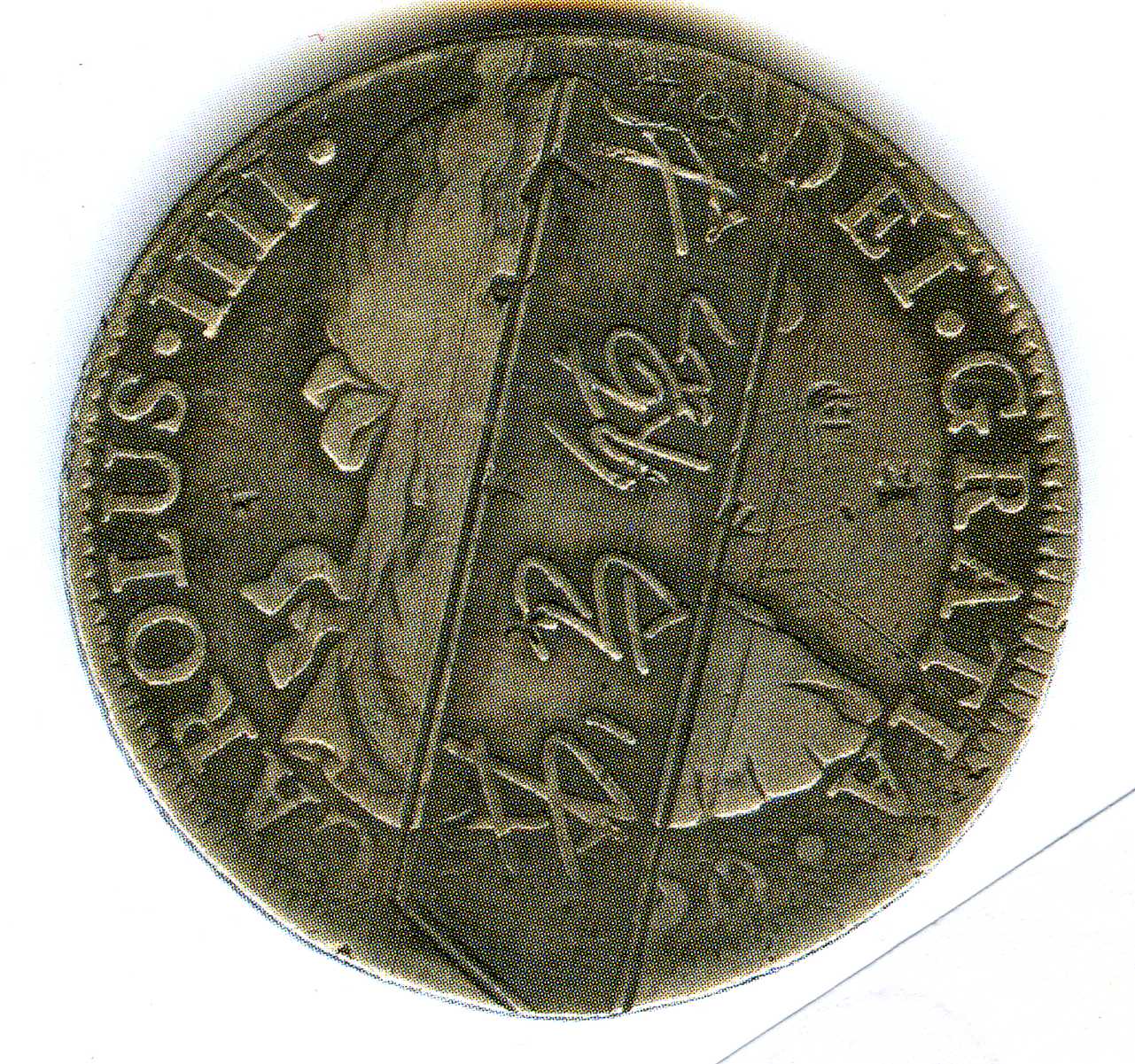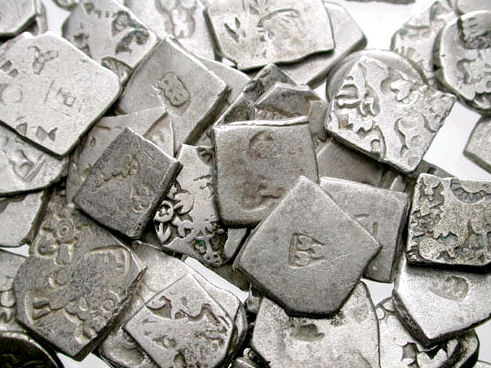|
Countermark
A countermarked, punchmarked or counterstamped coin is a coin that has had some additional mark or symbol punched into it at some point after it was originally produced while in circulation. This practice is now obsolete. Countermarking can be done for a variety of reasons. If the currency is reformed, existing coins may be rendered void. In this situation, coins already in circulation could be marked with the new value (according to the new currency system). The life span of existing coins could thus be extended, which might under some circumstances be a cheaper alternative to recalling the coins, melting them and striking replacements. Similarly, foreign coins could be marked as legal or accepted currency, thus allowing them to circulate in the area where they were countermarked. Countermarking can also be done for political reasons, i.e. a new state or régime demonstrating its authority by countermarking coins issued by the previous state. Some experts recommend not to use ... [...More Info...] [...Related Items...] OR: [Wikipedia] [Google] [Baidu] |
Chop Marks On Coins
Chop marks on coins are Chinese characters stamped or embossed onto coins by merchants in order to validate the weight, authenticity and silver content of the coin. Depending on particular technique coins said to have been "chopmarked", " countermarked" and "counterstamped". Starting with the 18th century, a number of European, American and Japanese silver coins (generically known as the trade dollar) began circulating in the Far East. Each merchant's firm had its own mark and, after heavy circulation, the design of the coin became completely obliterated by the chop marks. Chop marks were also used on copper-alloy U.K. Large Pennies, U.S. Large Cents and other copper coins of Europe, Central, South and North America and have Hindu, Chinese, Japanese and Arabic nation's chopmarks as well as English alphabet chop marks from British and American Merchants in Hong Kong from the 1830s to 1960s when world silver coins and large pennies from many European and British Empire nations g ... [...More Info...] [...Related Items...] OR: [Wikipedia] [Google] [Baidu] |
Punch-marked Coins
Punch-marked coins, also known as ''Aahat coins'', are a type of early coinage of India, dating to between about the 6th and 2nd centuries BC. It was of irregular shape. History The study of the relative chronology of these coins has successfully established that the first punch-marked coins initially only had one or two punches, with the number of punches increasing over time. The first coins in India may have been minted around the 6th century BC by the Mahajanapadas of the Indo-Gangetic Plain. 19th-century proposals which suggested an origin from as early as 1000 BC, independent of the introduction of coins in Asia Minor, are "no longer given any credence". Silver coins were certainly being produced in the Achaemenid Satrapy of Gandāra, by the mid-4th century BC, before the Indian campaign of Alexander the Great, in 327 BC, as Plutarch noted Taxiles (Ambhi) of Taxila exchanged coined tribute with Alexander. According to Joe Cribb, Indian punch-marked coins go back ... [...More Info...] [...Related Items...] OR: [Wikipedia] [Google] [Baidu] |
Sumatra
Sumatra is one of the Sunda Islands of western Indonesia. It is the largest island that is fully within Indonesian territory, as well as the sixth-largest island in the world at 473,481 km2 (182,812 mi.2), not including adjacent islands such as the Simeulue, Nias, Mentawai, Enggano, Riau Islands, Bangka Belitung and Krakatoa archipelago. Sumatra is an elongated landmass spanning a diagonal northwest–southeast axis. The Indian Ocean borders the northwest, west, and southwest coasts of Sumatra, with the island chain of Simeulue, Nias, Mentawai, and Enggano off the western coast. In the northeast, the narrow Strait of Malacca separates the island from the Malay Peninsula, which is an extension of the Eurasian continent. In the southeast, the narrow Sunda Strait, containing the Krakatoa Archipelago, separates Sumatra from Java. The northern tip of Sumatra is near the Andaman Islands, while off the southeastern coast lie the islands of Bangka and Belitun ... [...More Info...] [...Related Items...] OR: [Wikipedia] [Google] [Baidu] |
1 Sol-Peso Guatemala Peru - 1891
1 (one, unit, unity) is a number representing a single or the only entity. 1 is also a numerical digit and represents a single unit of counting or measurement. For example, a line segment of ''unit length'' is a line segment of length 1. In conventions of sign where zero is considered neither positive nor negative, 1 is the first and smallest positive integer. It is also sometimes considered the first of the infinite sequence of natural numbers, followed by 2, although by other definitions 1 is the second natural number, following 0. The fundamental mathematical property of 1 is to be a multiplicative identity, meaning that any number multiplied by 1 equals the same number. Most if not all properties of 1 can be deduced from this. In advanced mathematics, a multiplicative identity is often denoted 1, even if it is not a number. 1 is by convention not considered a prime number; this was not universally accepted until the mid-20th century. Additionally, 1 is the ... [...More Info...] [...Related Items...] OR: [Wikipedia] [Google] [Baidu] |
Coin
A coin is a small, flat (usually depending on the country or value), round piece of metal or plastic used primarily as a medium of exchange or legal tender. They are standardized in weight, and produced in large quantities at a mint in order to facilitate trade. They are most often issued by a government. Coins often have images, numerals, or text on them. ''Obverse'' and its opposite, ''reverse'', refer to the two flat faces of coins and medals. In this usage, ''obverse'' means the front face of the object and ''reverse'' means the back face. The obverse of a coin is commonly called ''heads'', because it often depicts the head of a prominent person, and the reverse ''tails''. Coins are usually made of metal or an alloy, or sometimes of man-made materials. They are usually disc shaped. Coins, made of valuable metal, are stored in large quantities as bullion coins. Other coins are used as money in everyday transactions, circulating alongside banknotes. Usually the hi ... [...More Info...] [...Related Items...] OR: [Wikipedia] [Google] [Baidu] |






